In this article, we will learn about the main components of electric vehicles and their functions. As we know, an electric vehicle is a type of vehicle propelled by electric motors powered by batteries. Electric vehicles are gaining popularity due to their eco-friendly and economical operation, as they do not use fossil fuels to move the car.
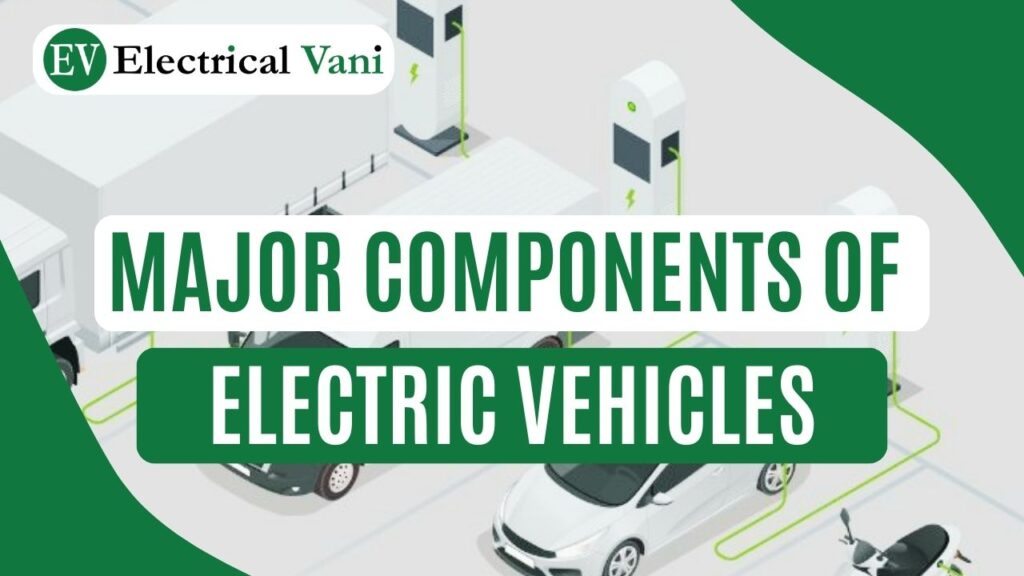
Let us now discuss the major components that an electric vehicle consists of.
Major Components of Electric Vehicles
An electric vehicle typically consists of the following main components:
- Power Pack or Battery Pack
- DC-DC Converter
- Electric Motor
- Power Inverter
- Controller
- Onboard Charger
- Charging Port
- Auxiliary Batteries
- Transmission Unit
Let us discuss each of these components of electric vehicles in detail along with their function.
(1). Battery Pack:
In electric vehicles, the battery pack is the main source of power to run the electric motors and move the car.
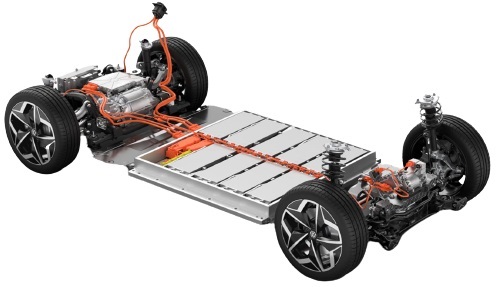
Most automobile manufacturers use the following three types of electric vehicle rechargeable batteries:
- Lead-Acid Battery
- Nickel Metal Hydride (NiMH) Battery
- Lithium-Ion (Li-ion) Battery
The battery pack stores the electrical energy in the form of DC voltage or current. The range offered by the car depends on the kW capacity of the battery pack. That means, the higher the kW capacity of the battery pack, the higher will be the range that the electric vehicle can cover on a single charge.
Currently, the electric vehicle manufacturers are using lead-acid batteries due to their mature technology.
The major problem associated with electric vehicles is that they occupy large spaces and are heavyweight.
A typical electric vehicle battery has an estimated lifespan of 320,000 km.
(2). DC-DC Converter:
In an electric vehicle, the battery pack used supplies a constant voltage of around 200 to 800 volts. However, the different electronic components require different voltages to work.
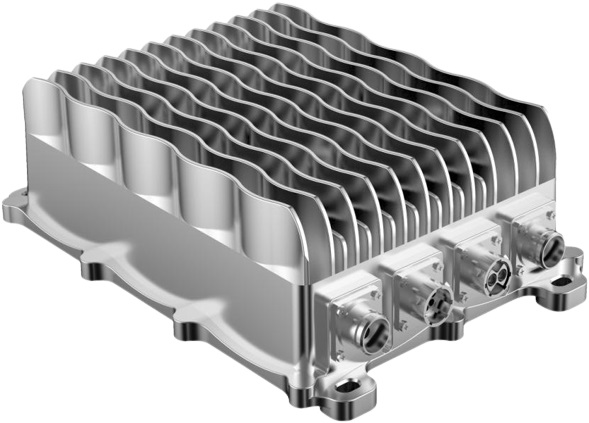
Thus, there is a device called a DC-DC converter is used. It takes the 200 to 800-volt high voltage from the main battery pack and converts it to a low DC voltage of around 13.5 volts to charge an auxiliary battery of 12 V.
Then, the 12 V auxiliary battery supplies required power to other components of electric vehicles like lights, window motors, horn, etc.
It is important to note that an electric vehicle does not have an alternator to charge the 12 V auxiliary battery. Hence, the DC-DC converter taps the main battery pack voltage and lowers it to 13.5 V to charge the auxiliary battery.
(3). Electric Motor:
The electric motor is the primary component of an electric vehicle as it delivers the mechanical power required to move the car.
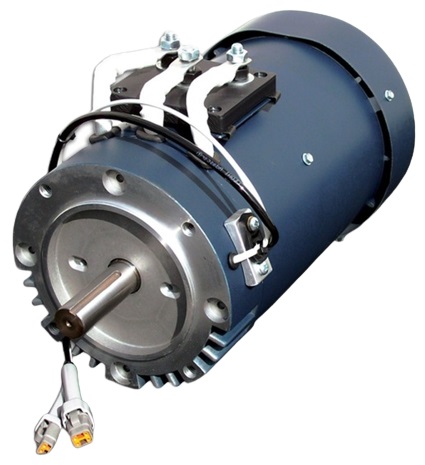
The electric motor used in an electric vehicle is one that has high-starting torque like a DC series motor or slip-ring induction motor.
The electric motor converts the electrical energy stored in the battery pack into rotational mechanical energy. The high starting torque is required to pull the car from a standstill condition and accelerate the vehicle quickly.
The mechanical power developed by the motor is delivered to the wheels directly or through a transmission unit that moves the vehicle.
The unique feature of the electric motor used in electric vehicles is that it acts as a generator (regenerative braking mechanism) and recharges the battery pack.
The electric vehicle motors can be of two types namely, DC motor and AC motor.
(4). Power Inverter:
In some electric vehicles, AC motors are used to rotate the wheels, as they have many control benefits. But we know that the battery pack delivers DC electrical energy that has to be converted into AC before being supplied to the AC motor.
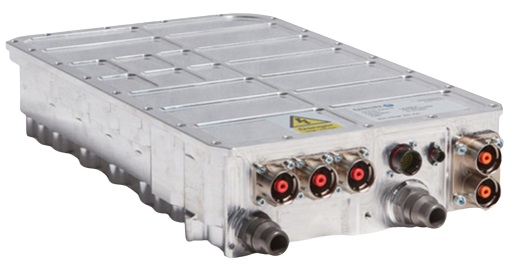
Hence, the power inverter is used to convert the DC power from batteries into AC power so that it can be supplied to the AC motor.
(5). Controller:
In electric vehicles, a computerized power electronic controller is used between the battery pack and motor which determines the overall operation of the vehicle.
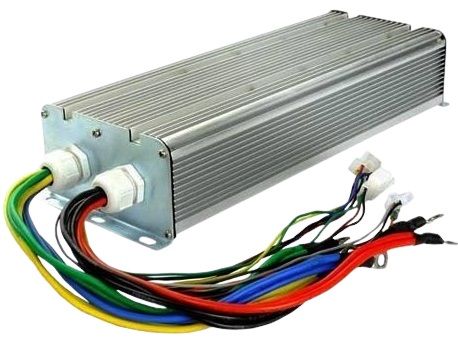
The primary function of the controller is to regulate the electrical energy from the battery pack to the motor to control the speed and acceleration of the vehicle.
Thus, the controller performs the same function as a carburetor does in a petrol vehicle.
(6). Onboard Charger:

The onboard charger is an electronic system installed in the vehicle and used to charge the battery pack. The onboard charger converts the AC electricity into a DC supply. It has a computer-controlled mechanism to monitor and control the current and voltage depending on the battery characteristics to optimize the performance.
(7). Charging Port:
The charging port is the connection point provided to connect the external supply to the electric vehicle’s onboard charger.
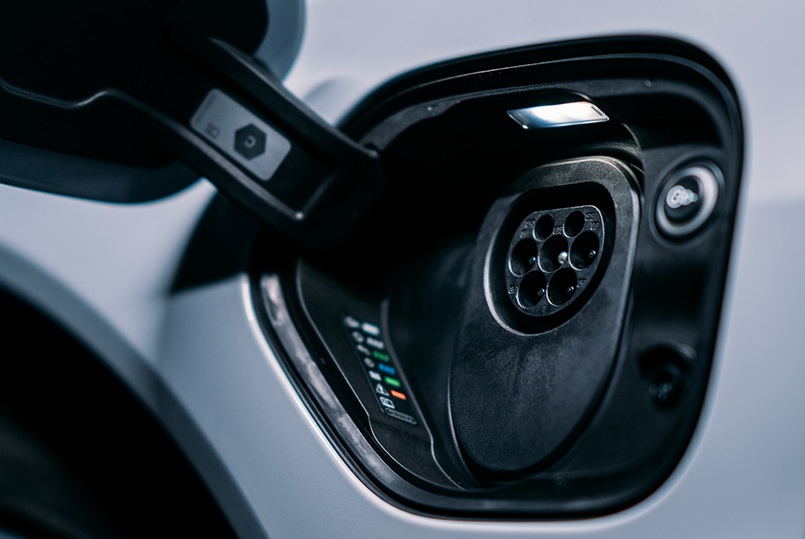
It is usually located on the body of the vehicles covered with cover.
(8). Auxiliary Battery:
In electric vehicles, the auxiliary batteries are used to power accessories of the vehicle like lights, wipers, window motors, horn, etc.

The auxiliary battery used in electric vehicles has a voltage rating of 12 V. These are also rechargeable batteries charged from the main battery with the help of a DC-DC converter.
(9). Transmission Unit:
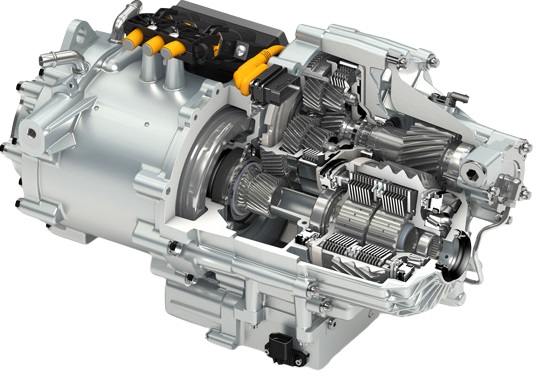
The transmission unit is a gearbox used between the electric motor and wheels to transfer the mechanical energy from the motor to the wheel. However, in some electric vehicles, no transmission unit is used, instead, the motor is directly coupled to the wheels.
Conclusion
In conclusion, an electric vehicle is a type of vehicle that contains an electric motor powered by a battery pack. Typically, an electric vehicle is a combination of mechanical and electronic components. In this article, I have explained all the major components of an electric vehicle along with their functions. The most significant components of an electric vehicle are the electric motor and the battery pack. The battery pack stores the electrical energy and the electric motor rotates the wheels of the car to move it.